NATURE 2.0
During the PEPS hearing, Harry takes Eusebio and Naomi to a late 22nd century wildlife reserve, where the d-humans recreated the awesome creatures we Primals made extinct in the 21st century.
At first, Eusebio is thrilled. But when he finds out the awful truth about Nature 2.0, he has a very different reaction...
|
the kelly hendricks game reserve
"The cub came right up to me and – yes – it licked the robotic leg of my VRU! I could feel the sensation so strongly, I almost shivered. It was a big, raspy, friendly, lick. Like a sandpaper kiss. I never would have believed that, in my life, I would be licked by a wild cheetah cub. Even if it happened virtually." But it wasn't always like this. In the 21st century, the Primals had allowed the great natural eco-systems of the world to disintegrate. Global warming had turned the savannahs into a desert, and virtually all the wildlife had died out. As Eusebio describes it:
"In the wavy haze, I saw patches of what seemed to be thousands and thousands of black dots. I double-blinked to focus in on the dots. I was getting used to this virtual reality magnification trick from yesterday. As my vision closed in on the dots, I sucked the air in awe. Each dot was an animal. Gigantic looking animals, grazing calmly. Looking up every now and then. Ojimo caught my gaze. "Wildebeest," he told me. "It's the time of the annual wildebeest migration. One of the greatest sights of the African savannah." I had no disagreement with him on that. I pulled back my focus to take in the whole scene again. It was glorious. It was magnificent. I felt a surge of wonder at the vast and beautiful existence laid out in front of me. A wave of gratitude to whatever twist of fate had allowed me to experience this moment.." |
|
THE UNITED NATIONS PROJECT FOR THE RE-ESTABLISHMENT OF EXTINCT SPECIES (UNPRES)
"Believe it or not, seventy five years ago, this whole area was nothing but dried up desert," said Ojimo. "A century of global warming, combined with the loss of the tropical rainforest, desiccated this region. The grasslands vanished, replaced by baked fields of dry, cracked mud. The wildebeest herds, the water buffalo, the Thompson gazelles – all the animals began to disappear. Their predators died out because there were simply not enough animals to keep them alive. The savannah had become a desert. A wasteland." "I don't understand," I responded. "How did it get like this?" "UNPRES," came back the response. "UNPRES?"
"So UNPRES used a creation of nanotechnology, called Nanonets . These nets are hundreds of kilometers wide, and a few kilometers high, attached to thousands of motorized weather balloons. Their texture is so fine they're invisible to the naked eye. A bird can fly right through the net and not even notice, and the fabric just closes back. But the fabric of the net is electrically charged to attract the droplets of moisture in clouds. When the weather balloons slowly start driving the net towards land, the rain clouds follow. As they get over the Masai Reserve, the balloons rise to a higher altitude until the rain clouds drop their precious cargo. And, hey presto, the Masai is green again." |
|
project regenesis
"But that was just the first part of the project," Ojimo continued. "What about the animals? Most of them were completely extinct. Luckily, a few organizations had collected the stem cells of virtually all the major species before they disappeared, and these had been frozen and stored, in some cases for nearly a hundred years. This was the source of Project Regenesis, one of the greatest achievements of this century." "Thanks to Kelly Hendrick, it all came together," Ojimo was clearly enjoying his soliloquy. He had spoken it so many times that every phrase, every intonation glided out like melting butter. "Kelly Hendrick was, as every schoolchild knows, the wealthiest woman of the twenty-first century. A billionaire by the time she was thirty, because every parent in the Western world wanted their daughter to look like her. By the time she was in her sixties, her beauty had become the most valuable female asset since Cleopatra." I could tell from the little snicker in Ojimo's voice that he loved that line.
"Kelly Hendrick was the first woman to become a trillionaire late in her life. But she didn't waste her money. For years, Kelly had been accused of being an empty-headed beauty, a symbol of the frivolity of the Western world. "Yes, it was one of the greatest projects in human history, and the result is the Kelly Hendrick Game Reserve today, filled with the healthiest, most diverse set of wild creatures ever seen in this part of Africa. "Look down over there at the wildebeest. Over three million of them in Masailand at this very moment. Fifty years ago, you could count them with the fingers of two hands."
[Animal embryo pictures: Rebecca, WonderfulWorldofAnimals.net] |
|
RESERVE CENTRAL But Nature 2.0 comes with a catch. When they're back at the Safari center, Eusebio discovers that everything's not quite as wild as it seemed. In fact, it's not wild at all. More like Disneyland than Swaziland.
"You see," he went on, "there's a constant interaction of information - trillions of bits of information - between us and every living organism out there. How do we get this information? Every organism in the park has genes implanted in their DNA that create "monitor" and "receptor" enzymes. And there are signal transmitters planted every ten meters from each other in the park. Sometimes, they look like a pebble, sometimes they'll be part of a tree trunk. You don't see them, but they're everywhere, creating a grid of information, with millions of grid-units.
"Let's take the case of elephants. When male elephants enter a state of enhanced sexuality, it's called 'must'. It makes them very aggressive. Now, if we have too many male elephants entering 'must' at the same time, they can cause damage. So we send a message to the receptor enzyme to reduce production of the elephant's testosterone. Within a day, the elephant is no longer in 'must'. Things are back under control." Ojimo was loving this. For the first time, I saw passion in his face. "Think about the lovely cheetah family we just saw. Now, suppose the cheetahs weren't catching enough ' tommies' and their population started dwindling. All we need to do is transmit a signal to the receptor enzyme of one of the ' tommies' to reduce its adrenaline response. Lo and behold, the next time the cheetah mother's trying to catch dinner, she succeeds. And before too long, the cheetah population comes back into normal range." |
|
22nd century disneyland
" "You see, Nature is an infinitely complex, infinitely delicate balance between multiple dimensions. It's a miraculous ecology, interfacing the climate, the carnivores, the herbivores, the vegetation, the insects… even the mold. This is what we've had to re-create here. This is the great achievement of the Kelly Hendrick Game Reserve." I was about to throw up. Literally. In my virtual reality cubicle in the UN Headquarters in New York, I felt my stomach churning. This jerk thought he and his crew were playing God. What he was telling me was that what I'd thought was real was in fact an artifice. That the whole safari park was just another version of virtual reality. There was nothing "wildlife" about it. It was a Disneyland, an artifice, a paean to the spectacular power of technology, but it had nothing to do with the real world of Nature that had spent millions of years evolving. It was Man's creation, not Nature's. The cheetahs, the gazelles, even the flies buzzing around the fresh kill – none of them had any free will, none of them truly existed other than as puppets of the technology hub of Reserve Central. It nauseated me." |
|
MANKIND AS "PLANETARY MAINTENANCE ENGINEER" But how realistic is Nature 2.0? Will we really let things get so out of control that it will take the d-humans of the 22nd century to fix it? And if they fix it, would it really be so micro-managed? Let's see what some of today's experts have to say. Here's James Lovelock, who first created the concept of Gaia – Earth as a meta-organism that sustains itself over billions of years – on how we've screwed things up so bad that now we'll have to take over the job that Gaia did since the beginning of life. He wrote these words in 1978, 30 years before "global warming" became accepted scientific fact at the UN:
"This could happen if, at some intolerable population density, man had encroached upon Gaia's functional power to such an extent that he disabled her. He would wake up one day to find that he had the permanent lifelong job of planetary maintenance engineer. Gaia would have retreated into the muds , and the ceaseless intricate task of keeping all of the global cycles in balance would be ours. "Then at last we should be riding that strange contraption, the 'spaceship Earth', and whatever tamed and domesticated biosphere remained would indeed be our 'life support system'. No one yet knows what is the optimum number for the human species… Somewhere beyond this figure, especially if the consumption of energy increases, lies the final choice of permanent enslavement on the prison hulk of the spaceship Earth, or gigadeath to enable the survivors to restore a Gaian world." [Spaceship Earth Picture: DaveGinsberg.net] And now, at the beginning of the 21 st century, serious scientists and environmentalists are already talking about "Nature 2.0". Lovelock's prophecy is already beginning to come true. In fact, this was the title of a July 2008 article in the respected British science magazine, New Scientist . Here are some of the points of view expressed in that article:
"…we are already engineering nature though our release of greenhouse gases and other pollutants, for example – but with considerably less forethought… radical change may well be the only viable option given the damage we have already inflicted on Earth. The status quo is not working" – Timothy Seastedt , University of Colorado, (paraphrased by Susan Oosthoek ). "There's a certain arrogance to thinking we know what we're doing" - Susan Lieberman, World Wildlife Fund International
Picture: Paul Williams
RECREATING WOOLLY MAMMOTHS And the DNA technology for Project Regenesis is just around the corner. In November 2008, the New York Times reported that scientists believe they can regenerate a woolly mammoth – extinct for 10,000 years – for as little as $10 million.
FEEDBACK: As we continue to drive species and ecosystems to extinction, should we take on the role of "life support engineer" for earth and recreate Nature using enhanced technology? Click here to share your own opinion. 
|




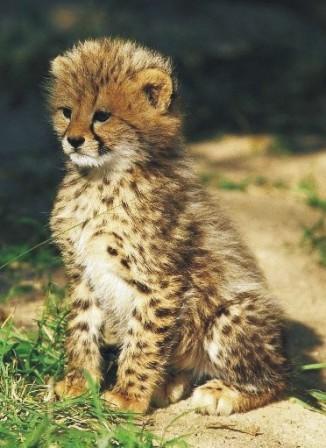
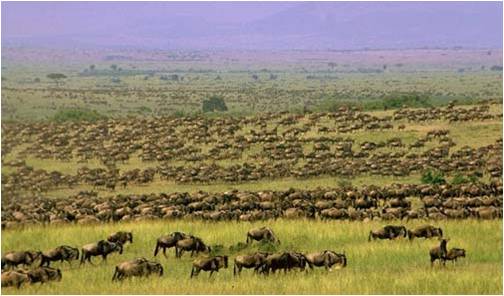 Flicking their tails. Mothers nuzzling their calves.
Flicking their tails. Mothers nuzzling their calves. 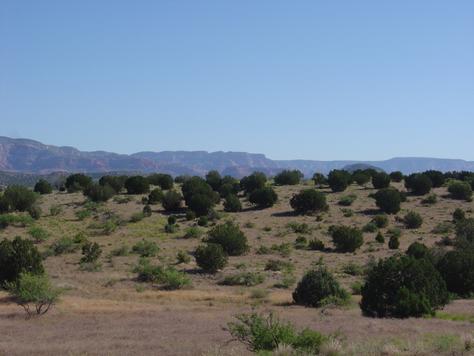 "
"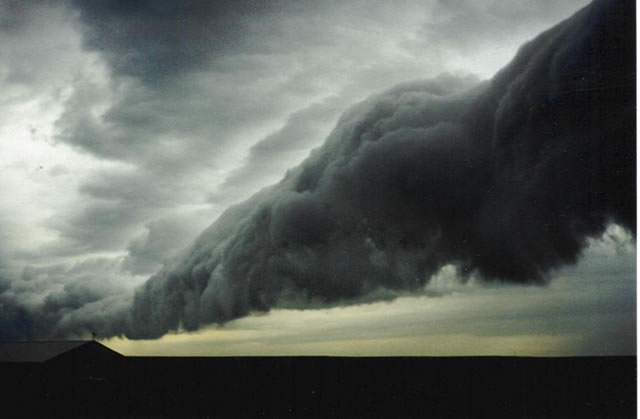 "The United Nations Project for the Re-establishment of Extinct Species," Ojimo explained further. "After the Great Global Wars came to an end, UNPRES was formed to perform the greatest act of geo-transformation ever seen. The first job was to get the rains back again. Global warming had changed the wind patterns so the rain clouds never made it over land.
"The United Nations Project for the Re-establishment of Extinct Species," Ojimo explained further. "After the Great Global Wars came to an end, UNPRES was formed to perform the greatest act of geo-transformation ever seen. The first job was to get the rains back again. Global warming had changed the wind patterns so the rain clouds never made it over land. 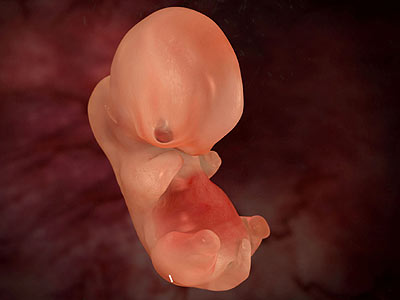 "Ojimo's slick style grated on me. But I was fascinated by what he was saying, and I was listening intently.
"Ojimo's slick style grated on me. But I was fascinated by what he was saying, and I was listening intently.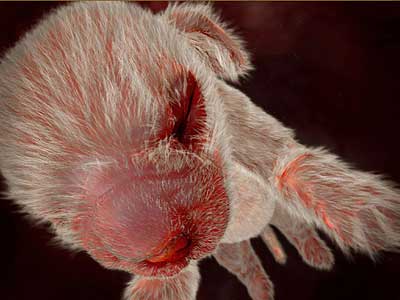 Then, she spent the final decades of her life proving everybody wrong. She cared passionately about the loss of the natural world around her, and she used her billions to recreate a game reserve in Africa, filled with the creatures that had once lived there.
Then, she spent the final decades of her life proving everybody wrong. She cared passionately about the loss of the natural world around her, and she used her billions to recreate a game reserve in Africa, filled with the creatures that had once lived there.  "Ojimo gave a big grin. "What seems to you like primal Nature in the reserve is in fact one of the greatest technological achievements in history," he explained. "You don't think, after the hundreds of billions of dollars and decades spent re-creating the wilderness, that we'd just let it go on its own, and hope things turn out right? Of course not."
"Ojimo gave a big grin. "What seems to you like primal Nature in the reserve is in fact one of the greatest technological achievements in history," he explained. "You don't think, after the hundreds of billions of dollars and decades spent re-creating the wilderness, that we'd just let it go on its own, and hope things turn out right? Of course not."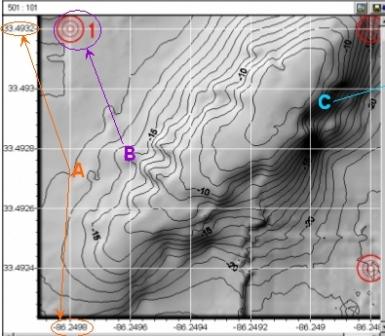 "Each second, we get signals which tell us everything we need to know to keep the reserve running smoothly."
"Each second, we get signals which tell us everything we need to know to keep the reserve running smoothly." There was no stopping Ojimo at this point. He was breathless."
There was no stopping Ojimo at this point. He was breathless." 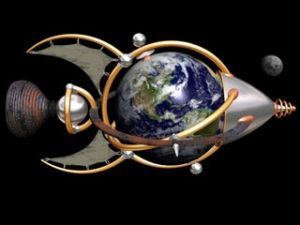 "…we might suffer either a planetary fever or the chill of an ice age, or even experience sustained oscillations between these two uncomfortable states.
"…we might suffer either a planetary fever or the chill of an ice age, or even experience sustained oscillations between these two uncomfortable states.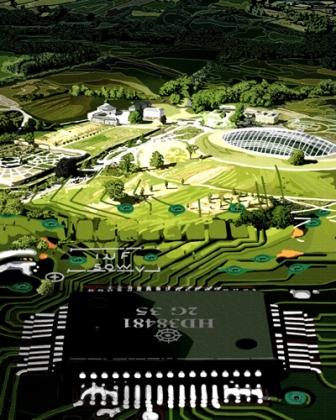 "…some conservation scientists say we should not be afraid to 'reassemble' damaged ecosystems to improve them. That may mean introducing non-native or genetically selected species… " - Susan Oosthoek , New Scientist
"…some conservation scientists say we should not be afraid to 'reassemble' damaged ecosystems to improve them. That may mean introducing non-native or genetically selected species… " - Susan Oosthoek , New Scientist
